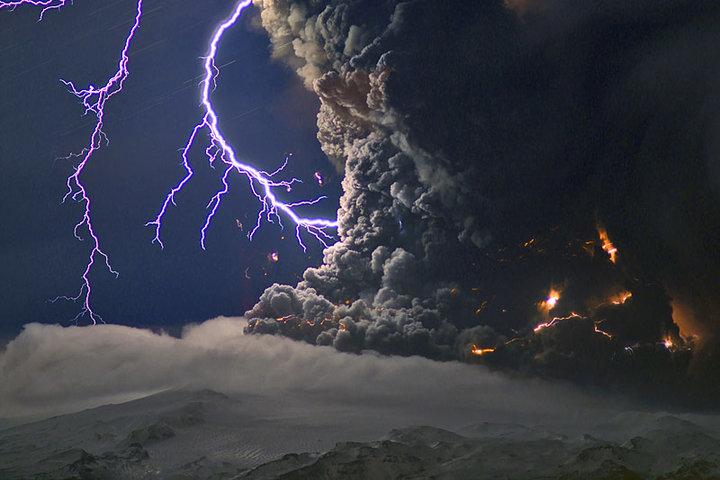Risk of Katla: Could 2nd Icelandic Volcano Eruption Follow?
London, UK - 18th April 2010, 00:50 GMT
Dear ATCA Open & Philanthropia Friends
[Please note that the views presented by individual contributors are not necessarily representative of the views of ATCA, which is neutral. ATCA conducts collective Socratic dialogue on global opportunities and threats.]
The eruptions of the comparatively small Eyjafjallajökull glacier volcano in Iceland have historically preceded massive eruptions by the more feared Mount Katla. Experts are concerned that the present volcanic eruption could trigger activity at Mount Katla, which is potentially much more dangerous. Its last major eruption was in 1918. Icelandic volcanologists consider it plausible that Katla may erupt, and that is why they are monitoring Katla very closely right now. There are eruption channels between Eyjafjallajökull and Katla and magma could shoot into the Katla volcano. Katla might only need a nudge. Effects of Katla's eruption would put the present air travel chaos in the shade, inflicting much greater economic losses upon Europe. Deposits from the ash cloud formed by Katla when it erupted spectacularly in 1755 can still be found in peat bogs in Shetland and other parts of northern Europe.
 Zoom on lightning caused by electrical discharge within volcanic ash column, Eyjafjallajökull, Iceland
Zoom on lightning caused by electrical discharge within volcanic ash column, Eyjafjallajökull, Iceland
Iceland is a volcanic hot spot on the Mid-Atlantic Ridge, which is the dividing line between the Eurasian and North American continental plates. The country's three major volcanoes -- Hekla, Katla and Grimsvotn -- lie along this boundary. Altogether there are 35 active volcanoes on and around the island. Icelandic settlement reaches back to the late 9th century AD, with three documented instances of an eruption in the Eyjafjallajökull volcano preceding an eruption in Katla, but 22 documented eruptions in the much more active Katla in the same period. This connection has not been lost by geologists observing the disaster. Icelandic history is rich of tales of the might of the much-feared Katla volcano.
Eyjafjallajökull, which is currently filling the sky above northern Europe with ash, is a minor player in Icelandic terms -- though its last eruption lasted for more than a year, from December 1821 to January 1823. It began erupting soon after midnight on March 20th this year and the first eruption lasted for three weeks. It erupted for a second time on Wednesday April 14th and the lava is now coming out ten times faster than the last eruption. This eruption has many of the same characteristics as the eruptions in the 19th century. Whether or not the eruptions go on for nearly a year as the past eruptions did, only time will tell:
1. Some experts suggest that the present eruption could soon start tapering off; yet
2. Some leading volcanologists have warned that eruptions from Icelandic volcanic activity could last for up to a year.
We can expect the volcanic ash already spewing out of Iceland to hang around in the skies for the next couple of weeks with many planes grounded across many European countries, but if Katla goes then it might last for months. Back in 1783 another volcano in Iceland caused thick fog across Europe and even spread as far as the US, for eight months!
[ENDS]
We welcome your thoughts, observations and views. To reflect further on this subject and others, please respond within Twitter, Facebook and LinkedIn's ATCA Open and related discussion platform of HQR. Should you wish to connect directly with real time Twitter feeds, please click as appropriate:
. ATCA Open
. @G140
. mi2g Intelligence Unit
. Open HQR
. DK Matai
Best wishes

